
The way to describe someone as having a stroke of good luck in English is not nearly as adorable as the German words “du Glückspilz”. Whilst our expressions range from “you lucky devil” to “you lucky [profanity]”, the German expression means “you lucky mushroom”. Just to make it even cuter, “Glück” can refer to happiness as well as luck. Now imagine a German cordially congratulating you, “you happy/lucky mushroom” on winning a birding competition to the bird-watcher’s paradise which is Helgoland, an island in the North Sea about 70km north of Cuxhaven. With such joy did I say these words to Jacob, one of ten competition winners, before announcing that I would be joining him on this trip. “Do you really want to come to a big sandstone rock in the middle of the North Sea for a whole weekend?”, he asked with concern, not wanting to have to entertain his girlfriend during the central European bird migration. “Do not worry Jacob, I will entertain myself”, were my confident words. And it worked, because here I am, on Helgoland with my mycol- and ornothologist-competition-winner. What lucky, happy mushrooms we both are!
Another lucky mushroom, Frank, who also won a place on the trip to Helgoland, picked us up from our flat in Stuttgart at midnight on Thursday, and we drove the 700+ kilometres to Cuxhaven through the night. Whilst I was able to get some sleep in the back, Frank drove the whole way and Jacob fulfilled his role as first passenger, keeping Frank company and chatting to him on the seemingly endless Autobahn which does in fact end at the North Sea. By 9:15am we were on the “MS Helgoland”, and whilst the boys found sofa-like-chairs to curl up on for an hour, I pootled down to the cafe to read my Helgoland guidebook.
My first impression of North Sea life was at the harbour in Cuxhaven when a William Defoe look-alike, straight out of The Life Aquatic with Steve Zissou, checked our tickets. I had to stop myself from taking a picture with him, instead I just enjoyed watching the man in marine colours, with his navy blue beanie rolled up above his ears as is the Hamburg-German-hipster fashion, strutting around the dock, cigarette in one hand, a tissue in the other and a pierced ear like the majority of the North Sea dwellers we would see over the course of the weekend. Once we set off to sea, we passed ships to our left and right, each one reminiscient of The Boat that Rocked. Once we arrived, the competition winners met to discuss their weekend’s activities and I went on my first walk around the island. At the tallest point (61m), I used my phone map to turn myself in the direction of England, Chester to be more precise. Picturing the closing scene in The Boat that Rocked where the DJs’ boat is sinking into the North Sea, I imagined the boats rushing to save them. Were they heading to somewhere near where I stood now?
In the North, they don’t say “Guten Morgen”, they say “moin”. Sometimes they say “moin, moin”. Picture the seagulls from Finding Nemo but rather than that of the annoying, greedy seagulls, the northern Germans’ “moin” is soft, catchy and perceived so cool that it sometimes drifts from Hamburg into the language of the hip young folk of Berlin, Cologne and Stuttgart. High up on the North Sea, “Moin” is all we hear now.
Helgoland is a beautifully unusual German island. Unusual because its red sandstone is not seen anywhere else on this side of the North Sea coastline. The red bricks immediately remind me of old Blighty as does the rock of Cheshire’s sandstone ridge. “I like northern Germany”, I told Jacob, having been there for less than hour. It was so much like England that I felt right at home. Helgoland has a similarly mild climate to the UK, both heavily influenced by the Gulf Stream. My hair was wet from the cloud lingering on the coast, but it wasn’t cold. 15 degrees and wet? Sounds like home. One of the islanders told us that it snows here so rarely that when it does, the kids get a snow day so that they can experience it.
It’s now late October and our ferry is far from empty. Torrents of bird watchers speaking German, Dutch, French and other languages I don’t recognise are aboard our ship, on their way to the island on which more than 434 bird species have been sighted. That’s more than any other place in central Europe. On our first day on Helgoland, we visited the ornithologist’s station which is the second oldest in the world. Here, volunteers have been putting little metal rings on birds’ ankles since 1910. About a million birds have been ringed during their migration in the last 112 years. Able to identify the birds’ light-weight anklets, other bird stations around the world report back to the Helgoland orni-station, so a robin that was recorded in Helgoland in 2010 can be reported in Africa some years later.
An FÖJler (ecological volunteer) told us about her work and had the impressed various bird enthusiasts hanging off her every word. In May and June, floods of birders seize the island to see the “Trottellummen” (a murre or guillemot). The “Lummenfels” (murre’s rock) is the biggest breeding spot in Germany. They look a bit penguin-esque and are loyal to their breeding spots, meaning they come back every year to the pilar of red sandstone that is part of the island and known as the Lummenstein (the murre’s stone) or as “die lange Anna” (the long Anna, named after a local waitress). The murres are only there to breed and otherwise live like divers on the sea. Some time after the little lummen babies have hatched, they jump off the side of the 47m tall red cliff they were born on into the North Sea. This is called the “Lummensprung” (murres’ leap). Not yet able to fly, it looks a little like Philip Seymour Hoffman and Rhys Ifans’ duel in The Boat that Rocked, arms flailing and all.
Helgoland is made up of two islands, the one square kilometre main island (mostly sandstone) and the 0.7 square kilometre neighbouring island Düne which has the same rock seen in the White Cliffs of Dover (another indication of my Heimat!). Düne is heavily vegetated with shrubs and plants where the birds can forage. Most of the birds migrating over Helgoland have a north east to south west route, i.e. they start in Scandinavia and Russia and end up somewhere between the UK and West Africa. We learnt from the FÖJler that the birds stopping in Helgoland aren’t here according to plan, but often out of necessity. They aren’t coming from very far, having essentially just started their journey. Compare it to a marathon: you don’t plan to stop at the first drink’s station, but if it’s tipping it down or the fog is so heavy you can’t see a thing, you might just stop a little longer than planned at the first drink’s station, especially if it has brownies. So when the weather’s bad, all the birds have to do is follow the lighthouse’s signal over the North Sea to a place they can double their weight before continuing their journey. Helgoland’s lighthouse is the strongest on the North Sea and, like Alcatraz but unlike other lighthouses, its light rotates in an anti-clockwise direction.
As I walked around the island on my last morning there, first along the west side northwards and then back along the east side southwards, it was as windy as you would expect it to be on a rock in the North Sea. I was thankful for the 5 foot wire fencing around the perimeter of the island. It’s difficult to focus on any birds as I press the binoculars against my glasses and they rattle and shake in the wind. I see the little penguiny murres for the first time, most of them facing the red sand stone rock apart from a few who stare down at the North Sea, looking for a trace of a fish to leap on. One goes for it, nose dive off the cliff side, wings at its side. On the rock, you can see odd parcels of blue and red, bright primary colours which clash with the sandy red stone. The birds make nests with the plastic and rubbish they find in the sea. Two dead birds dangle on the cliffside, each hanging from their ankle on a string of plastic from the nest.
I carry on walking along the west side of the island, the wind battering my eyes. The birds are active in the wind. Seagulls glide above the cliff side, some of them so big that I start looking out for the albatross that was sighted here. I can see swarms of stars, they’re easy to recognise even from far away because of their unique flying style. Each star follows the one to its right, so they move like synchronised swimmers through the air. On a windy day, they are a delight to watch. They don’t fight the wind but fly with it, quickly to the left with a gust of wind and then they drop like leaves until the next gust propels them forward and they speed on. On the coast, they are impossible to miss against the white backdrop of the sky. Once I reach the end of the island, die Lange Anna, I look west towards England before continuing my way on the path. The east side of the island is almost completely sheltered from the wind and this is where the other birds are, mostly thrushes and blackbirds in the shrubs, bushes and low-cut trees. I see a sign with arrows showing me the distance to the places which have marked Helgoland’s history: England, Zanzibar, Denmark and Schlewsig Holstein. The clouds are streaming over head so quickly that every time the sun goes in, it’s only a matter of minutes before it comes out again.
Helgoland was formed about 250 million years ago when layers of shell limestone were piled up around the island, the oxidation of the iron and aluminium in the rock giving it its red colour. About 11,600 years ago, the area connecting mainland Europe and the British Isles, Doggerland, was a dry tundra. Reindeer hunters and foragers lived on Helgoland when they could get there by walking across the Doggerland. Fast forward 5000 years and the water levels have risen, but a land bridge still connects Helgoland and Germany. After the last ice age, the sea level rose again, covering the Doggerland and making Helgoland an island. The island’s name is probably a Low German variation on the High German “Heiliges Land” (Holy Land).
Along Helgoland’s main pier you’ll find the colourful “Hummerbuden”, “lobster houses” which were rebuilt after the war. Before they were able to rehouse fishermen and residents, they were homes to the workers rebuilding the island to make it inhabitable once again. As I walked along the water front, I listened out for traces of Halunder, the Frisian dialect spoken on Helgoland which is taught at school until year 4. On the way over, I read about “Halunner Moats”, “friends of Helgoland”. Moat (friend) sounds a lot like our English “mate”, and the linguist in me starts looking out for Halunder words on signs. Frisian is a West German language and remarkably close to English, so I start to notice the similarities. Our hotel is on “lung wai” (English: long way/ German: langer Weg), we see some “gus” (goose – Ganz) by the “kark” (church – Kirche). The boat taking visitors from Helgoland to the neighbouring Düne is called the “witte kliff” (Halunder for white cliff). Helgoland and the Düne were once connected by a white cliff of shell limestone. Over years of erosion and man’s interference, harvesting the white stone for building purposes, the white cliff started to disappear. It was finally washed away in the New Year’s flood of 1721.
In 1805, Napoleon was defeated along with his Continental Blockade on the British Empire, allowing the Brits to take over Helgoland in 1807 and swap the Danish flag for the Union Jack. You can understand Denmark and Germany tiffing over the island, but Britain, really? You just have to look at a map to see that this little island most definitely should not belong to them. In 1890, Germany and the UK organised the Helgoland-Zanzibar treaty: Britain gave Helgoland back to Germany and, in exchange, Germany “allowed” Britain to take control of Zanzibar. (NB: Zanzibar was not a German colony but they did have their eye on it).
When WW1 broke out, the 3000 islanders living on Helgoland were evacuated to coastal cities like Hamburg. They left their homes to the approx. 4000 soldiers who moved in. The Helgolanders were able to return to the island quite soon after the war, but their homes had been ruined by 4 years of neglect. In the 1930s, war comes again, and Helgoland was built up into something of a sea fortress (Seefestung). This time, it was the tourists bathing on the beaches of the Düne who were swapped for soldiers and about 7000 workers from Russia, Belgium, Denmark and France who were forced to build 13km worth of bunker. Once completed, the bunker was able to accommodate the 2000 Helgolanders, each person having their own 50cm spot on the bench so that they knew who was missing if a space was empty. 17.7m below ground, the bunker also had a bakery, offices and a pharmacy.
In April 1945, Britain took aerial shots of the island and, seeing no white flags, proceeded to drop 7000 bombs on the island. The population of Helgoland hid away in the bunkers for a few days before they were able to emerge onto their uninhabitable island. Those who survived were evacuated, again, to mainland Germany. Today there are six “Stolpersteine” (stumble stones) on Helgoland to commemorate the resistance group who were killed for communicating with Britain in an attempt to avoid the total devastation of their island. Once more in British hands, the island was to be demilitarised. This time, however, they wouldn’t make the same mistake as the “non intensive” military strip-back after the first war in which they basically just closed up some doors and left much of the equipment in tact.
Two years later, in April 1947, Britain loaded the bunkers with 6700 tonnes of explosives which were detonated on the final beep of the BBC’s 1 o’clock signal. Despite the magnitude of the explosion which was the biggest non-nuclear explosion the world had yet seen, the “Big Bang” (or the “British Bang”) did not blow the island to smithereens, its central shape had just been distorted. It now has a “middle land” as well as the upper land (above the cliff) and the lower land (the beach at the bottom of the cliff) which were already there. If the island wasn’t completely uninhabitable before the “Big Bang”, it was now. It became Britain’s bomb testing site for the next five years. During this time, a group of Helgolanders, eager to return to their island, spread the message of their cause to return home throughout Germany. This reached two philosophy students from Heidelberg who took a boat to the island on the 20th of December 1950 along with some members of the international press and three flags, those of Helgoland, Germany and Europe. This got the politicians talking and by the 1st of March 1952, Helgoland was handed back to Germany. This date is now a bank holiday on Helgoland. Since it’s not an official state holiday, the children still have to go to school, so the day is dedicated to the archipelago and its history.
One thing I think British people aren’t used to feeling in Germany is any guilt whatsoever. I suppose the feeling is somewhere between guilt and plain sorrow about war. But the longer I live here, the more often I’m confronted, albeit rarely, with remnants of war, and Helgoland was an example of this. British bombs destroyed the island and people died, and I did feel uneasy walking in the bunkers with my German contemporaries.
Nicole, our lovely tour guide, told us the truth about living on a small island in the North Sea. For example, parents often have to take their children onto the mainland to practise things like crossing the road, taking the bus, going somewhere in a car. The airport runway often needs to be cleared of seals before a plane can land. Drinking water is made on the island and it is about 4 times the cost of tap water on the mainland. The school on Helgoland only goes up to year 10 (GCSE level), so children wanting to do their Abitur (A Levels) have to go to the mainland. A woman who was born in the bunker during the war still lives on Helgoland today. Nowadays, kids aren’t born on Helgoland because of the lack of facilities, instead the mothers-to-be have to go to the mainland a few weeks before their due date. That said, if you grow up on Helgoland, you are seen as, and allowed to call yourself, a Helgolander.

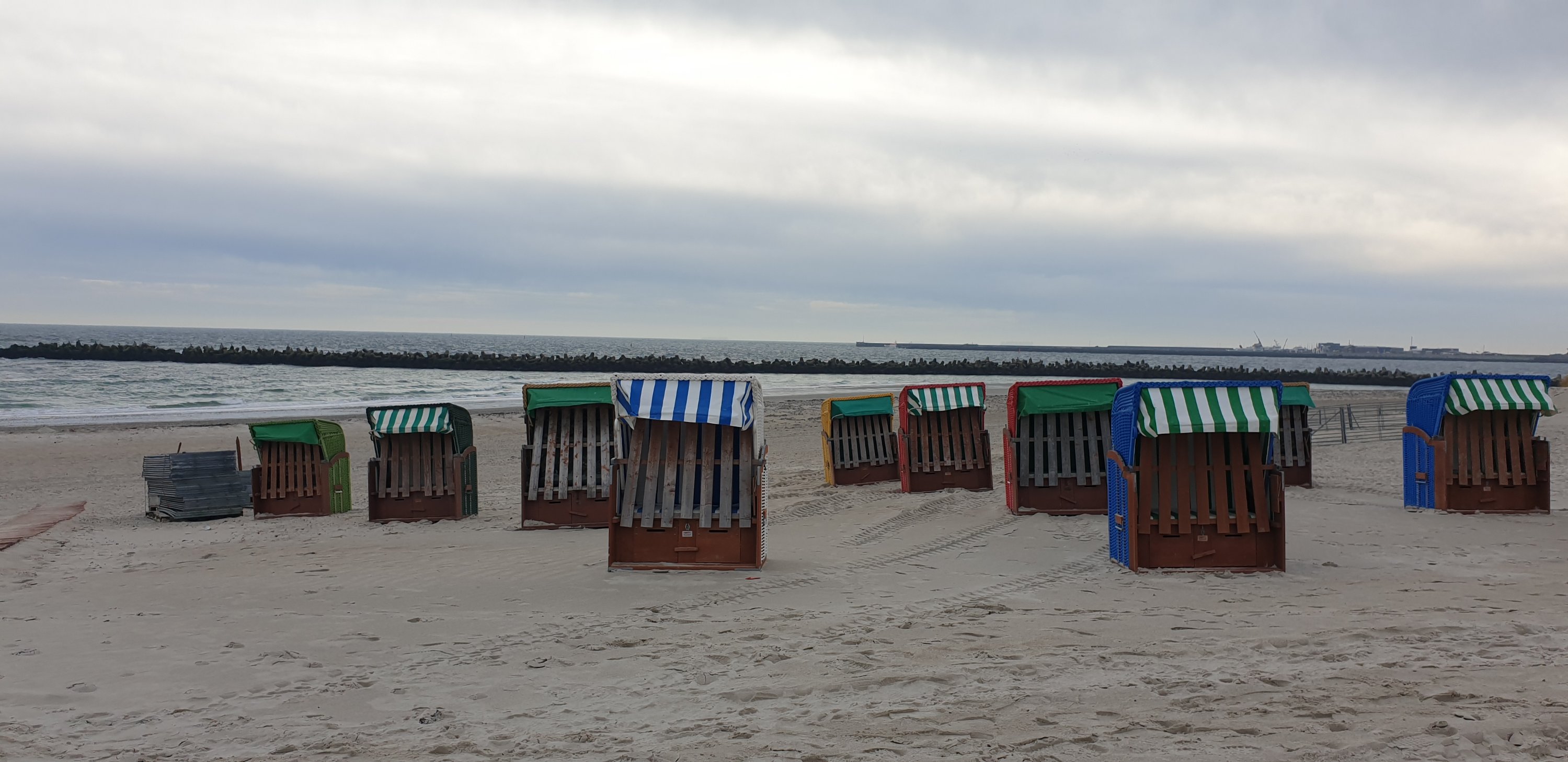

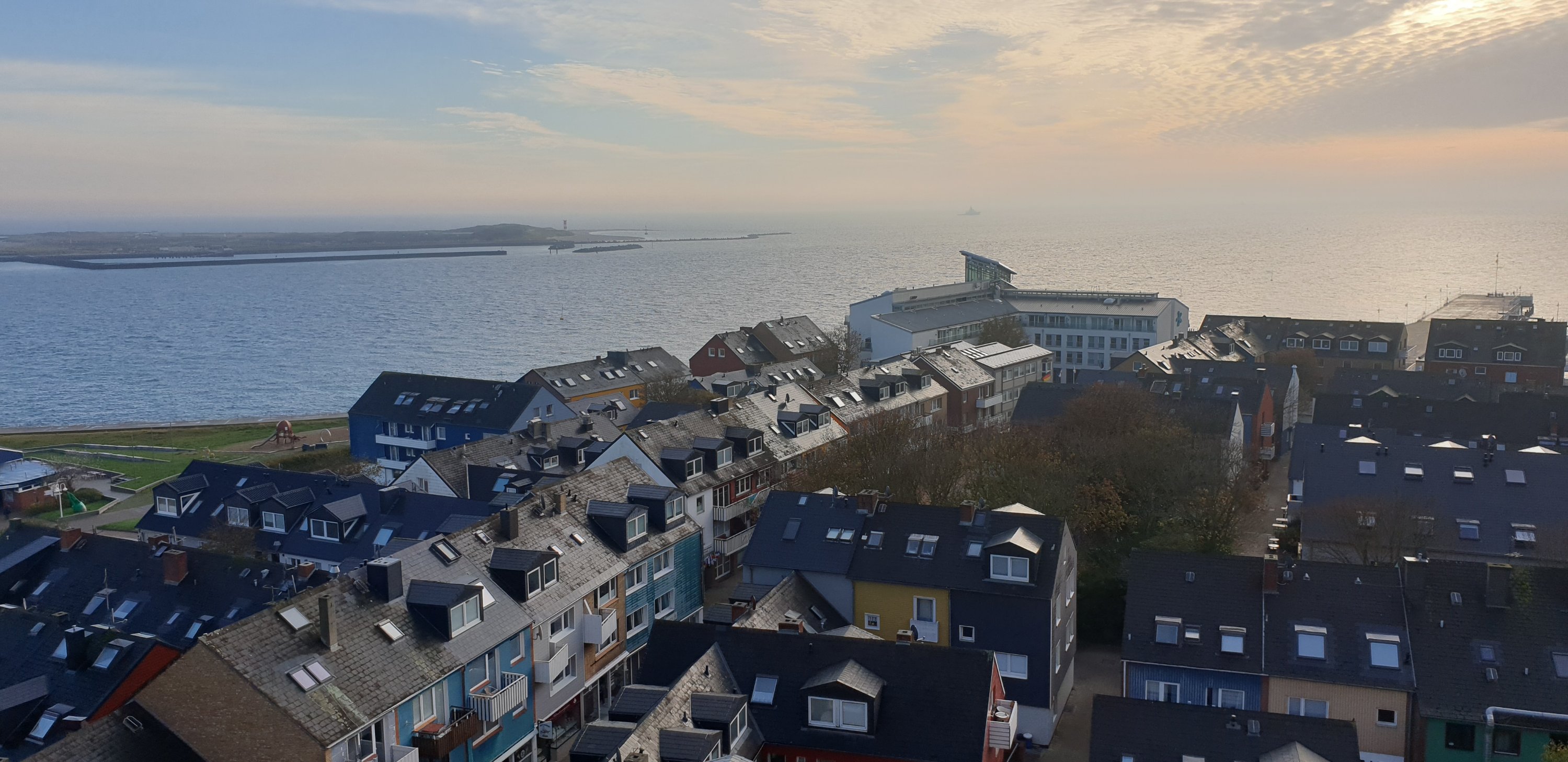


Hummerbuden – lobster houses
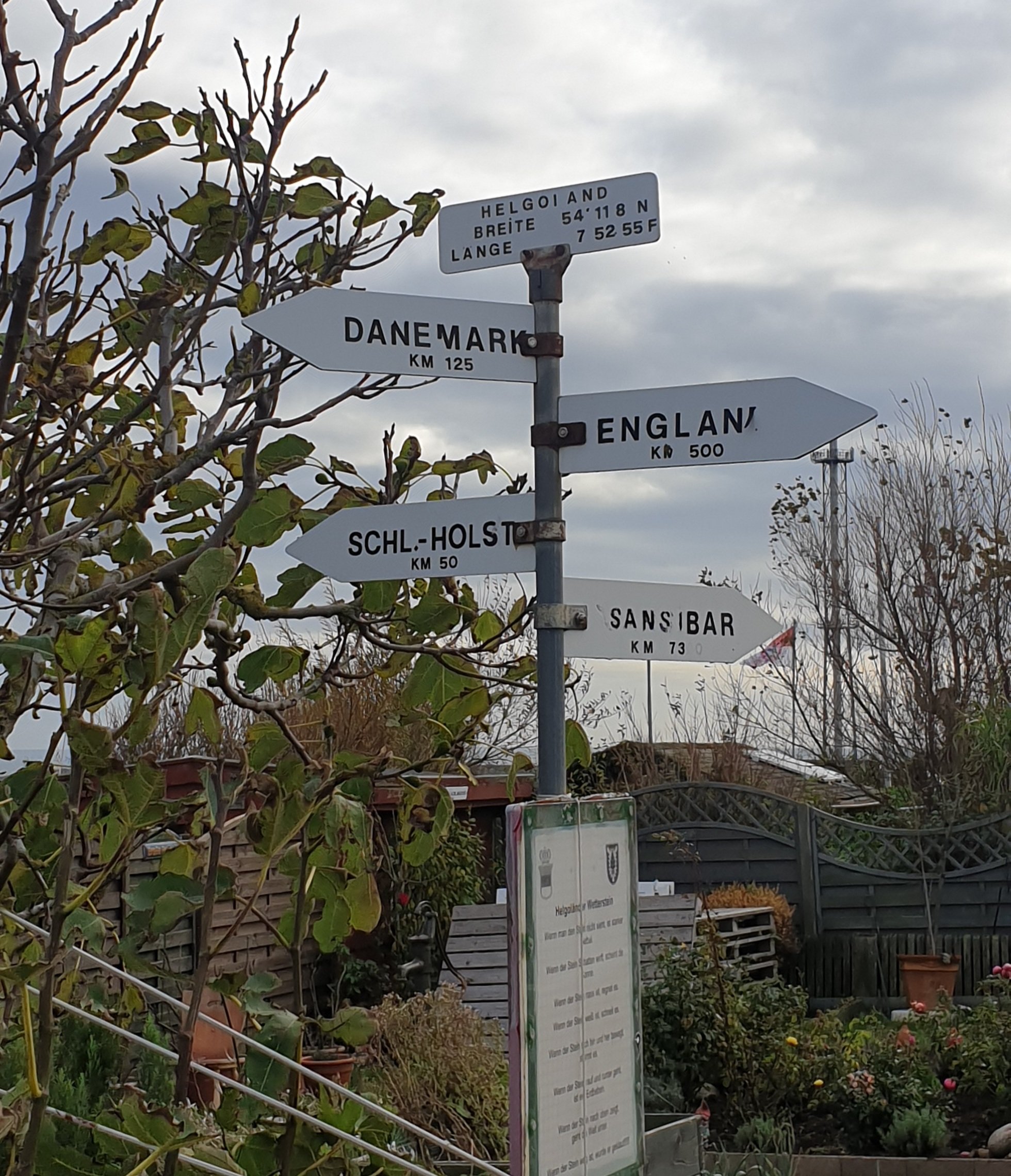
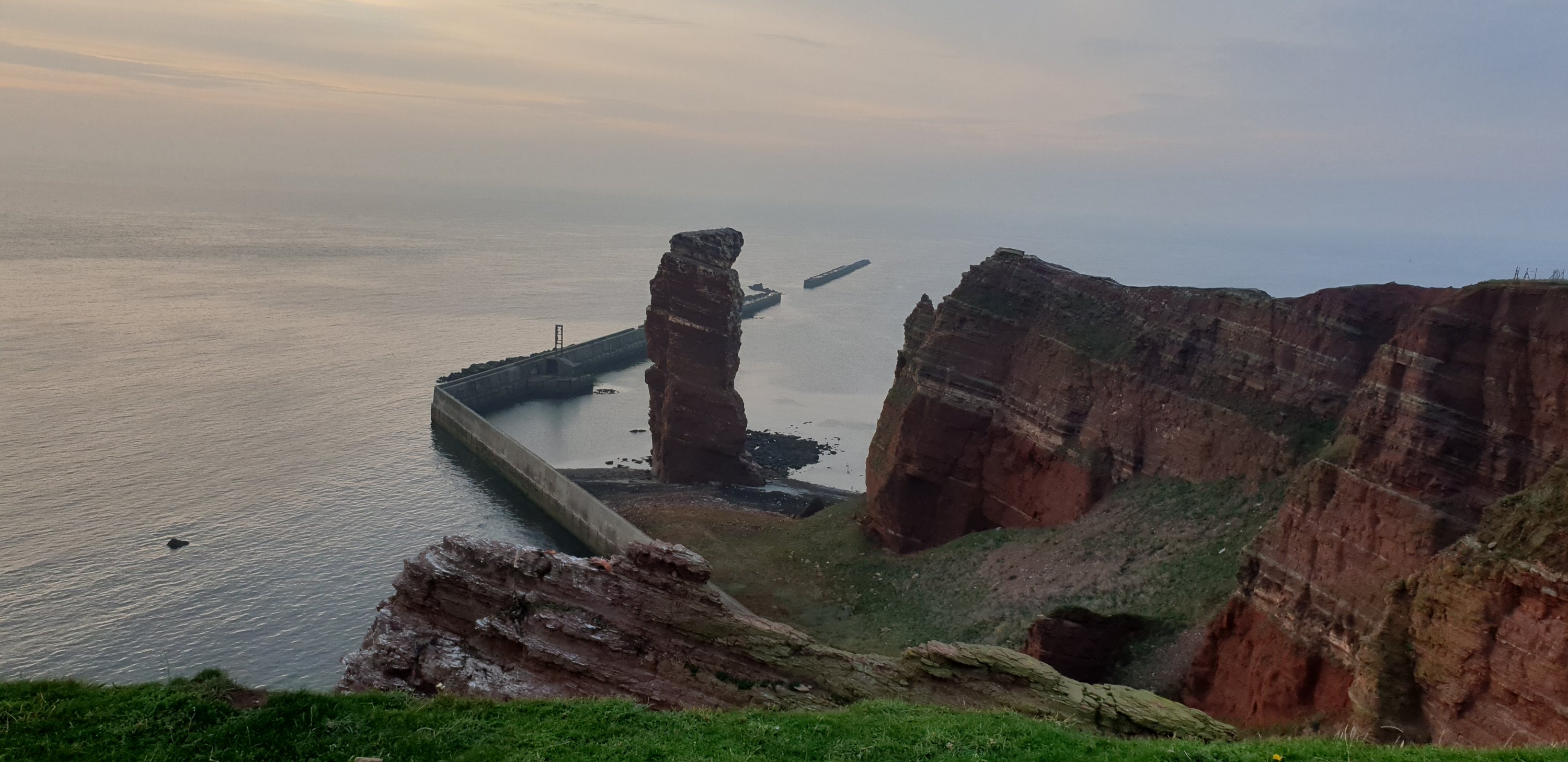


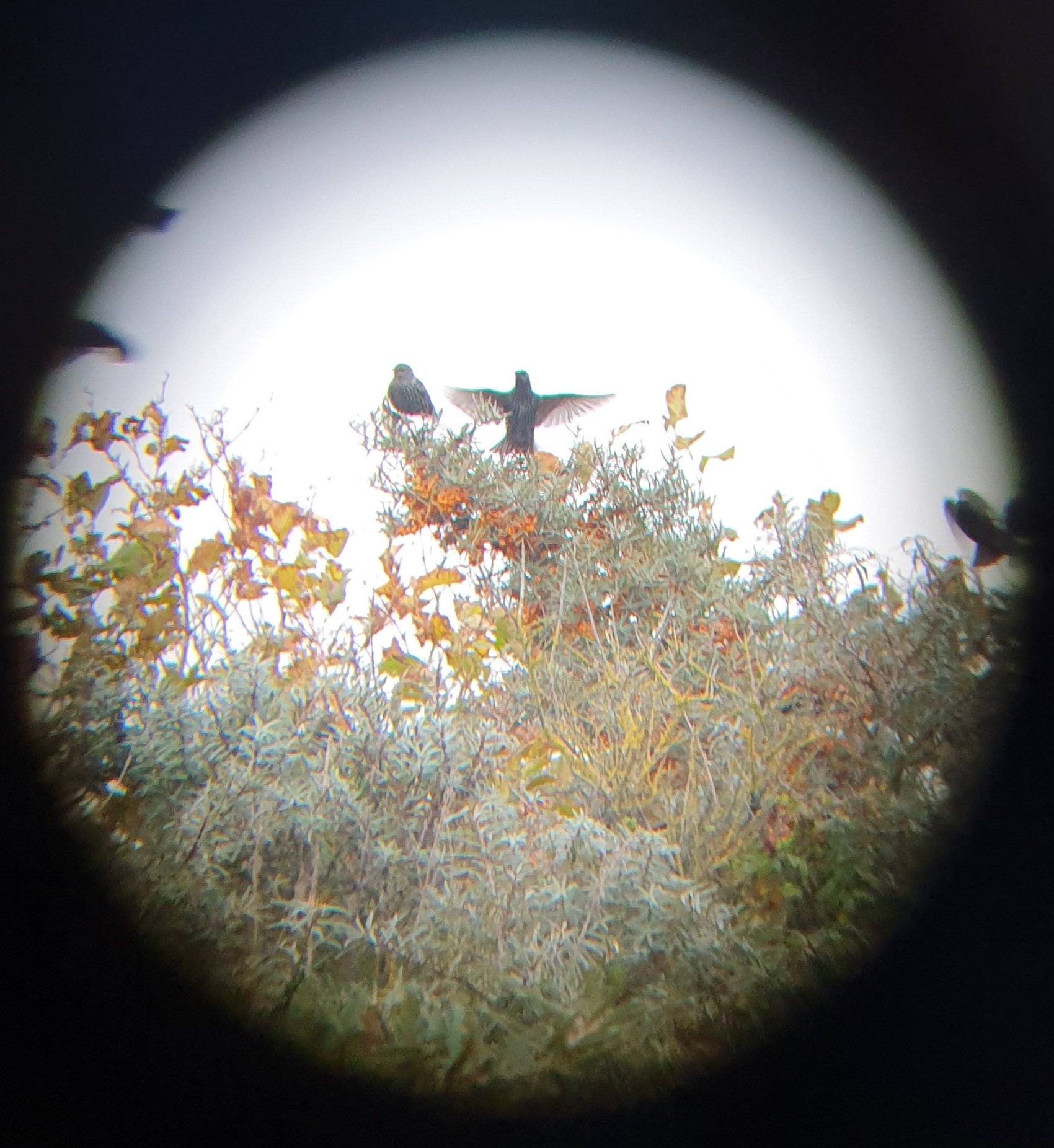


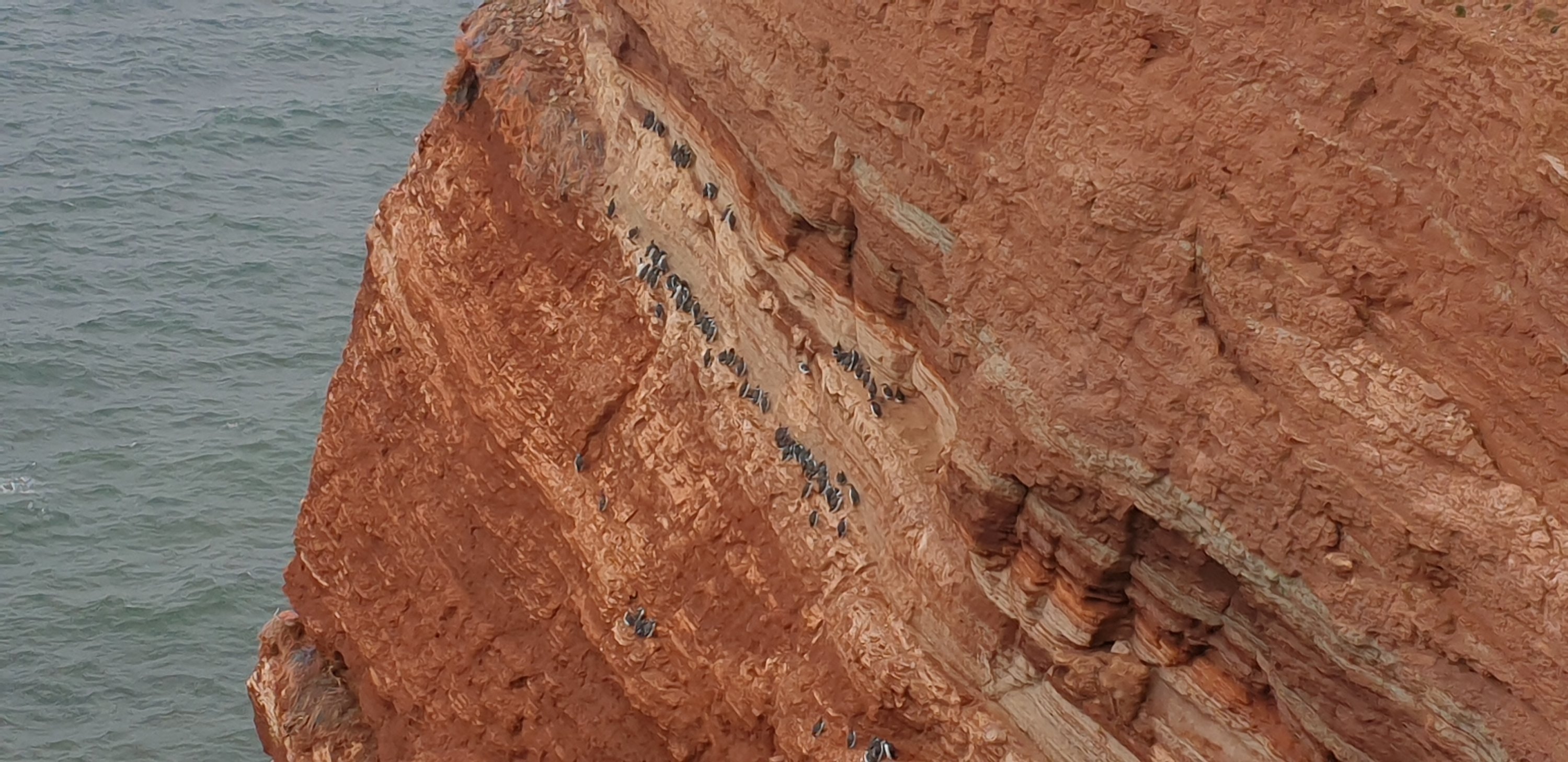

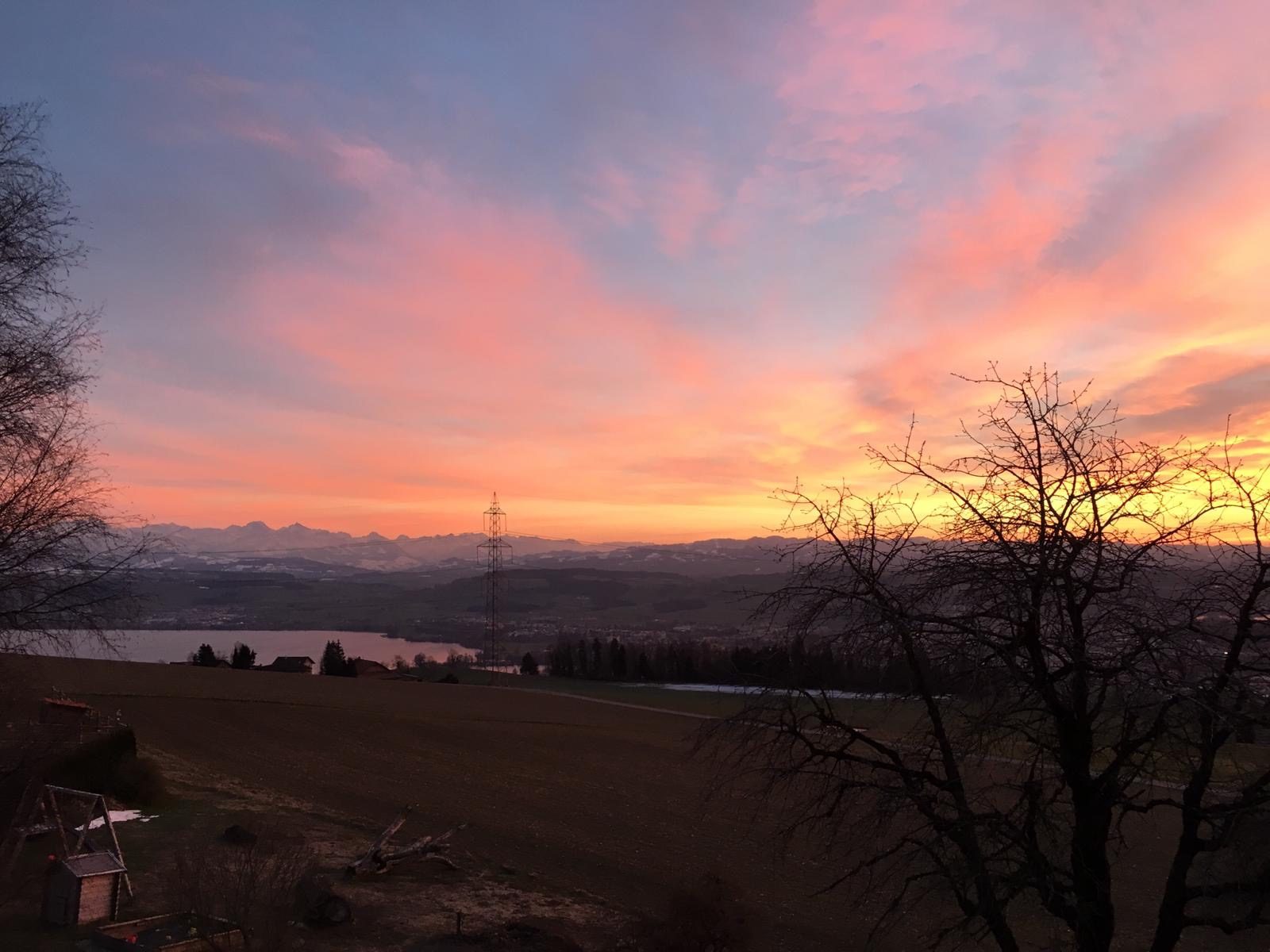
Just a quick note to congratulate you on this article, Lucinda – fascinating, wide-ranging, extremely informative and well-written; you are certainly your Mother’s Daughter!!
Well done and thank you!
John
LikeLike
Thank you very much John, very kind words as always! Thanks!
LikeLike
Thank you for your wonderful post–I loved the language lesson!
LikeLike
Thank you so much Mary Lou! ❤
LikeLike